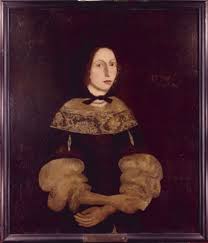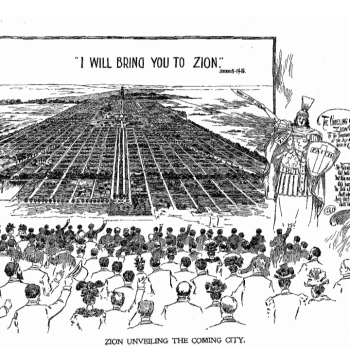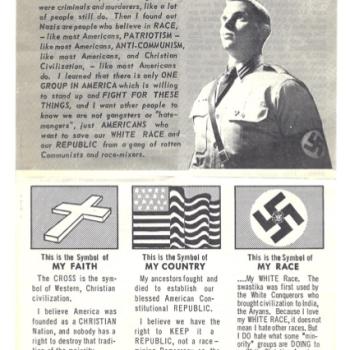A blog post sometimes serves as a forum to try out an idea that is not yet fully formed. Sometimes those ideas turn out to be entirely wrong.
Two months ago, I wrote about a painting of Rebecca Rawson I had seen at the New England Historical and Genealogical Society Library in Boston.
 The painting’s caption briefly narrated her sad fate. The daughter of Massachusetts Bay colonial secretary Edward Rawson, Rebecca married a man who presented himself as Thomas Hale, the son or stepson of the wealthy Lady Hales. The couple married and went to England, whereupon the groom took all of their belongings and left her, never to return. She learned that her husband was really Thomas Rumsey, already married to a woman in Canterbury. Even worse, when she finally decided to return to England thirteen years later, she went by way of Jamaica, where she died in the earthquake of June 1692.
The painting’s caption briefly narrated her sad fate. The daughter of Massachusetts Bay colonial secretary Edward Rawson, Rebecca married a man who presented himself as Thomas Hale, the son or stepson of the wealthy Lady Hales. The couple married and went to England, whereupon the groom took all of their belongings and left her, never to return. She learned that her husband was really Thomas Rumsey, already married to a woman in Canterbury. Even worse, when she finally decided to return to England thirteen years later, she went by way of Jamaica, where she died in the earthquake of June 1692.
Joshua Coffin wrote about Rebecca Rawson in his 1845 Sketch of the History of Newbury, and then John Greenleaf Whittier partly fictionalized the tale in his Leaves from Margaret Smith’s Journal. Coffin drew on a testimony from Theodore Atkinson (and his wife Mary), who had employed Rumsey in 1678.
I could not find any earlier records, though I intended to look in the Coffin papers at the Peabody Essex Museum on a future trip to Massachusetts.
At first glance, I thought the Rebecca Rawson story was too good to be true, partly because few historians had paid any attention to it. Also, in a quick search, I could not identify a Theodore and Mary Atkinson of the appropriate ages to testify about Rebecca Rawson’s courtship, marriage, and misfortune.
To my great embarrassment, after blogging about the above, I received a courteous email from D. Brenton Simons, president and CEO of the NEGHS and author of the delightful Witches, Rakes, and Rogues: True Stories of Scam, Scandal, Murder, and Mayhem in Boston, 1630-1775. One of those scams was Thomas Rumsey’s deception of Rebecca Rawson; the story is a chapter in Simons’s book.
The testimony of Thomas and Mary Atkinson contained in the invaluable Massachusetts Archives Collection. The Congregational minister and historian Joseph Barlow Felt organized this enormous collection of material in the late 1830s; Joshua Coffin would have had access to these materials when he wrote his history of Newbury. (The Massachusetts Archives Collection is now accessible without charge on familysearch.org).
Also, as Simons documents, the minister Peter Thacher recorded the wedding of Rebecca Rawson to a “Mr. Thomas Hales” on July 1, 1679. This was doubly embarrassing, as I had read this year of Thacher’s journal the same week that I encountered the painting of Rebecca Rawson.
A story I thought was too good to be true turned out to be true.
In any event, as I wipe the egg off of my face, I am very grateful to Dr. Simons for bringing his chapter and research to my attention.
Many years ago, I used to have my U.S. History survey students read two competing narratives of American history, Howard Zinn’s A People’s History of the United States and Larry Schweikart and Michael Allen’s A Patriot’s History of the United States. We compared the two accounts in class and tried to learn to read all texts critically.
One of my students noticed what was a rather glaring statistical error in People’s History. I recommended that she write Dr. Zinn and ask him about it. She received the following response: “this is a good example of how historians can make mistakes.” Especially given his fame, I found it very endearing that Zinn responded.
In any event, my blog post is also a good example of the same! I am grateful to have learned of the sources behind the story.













